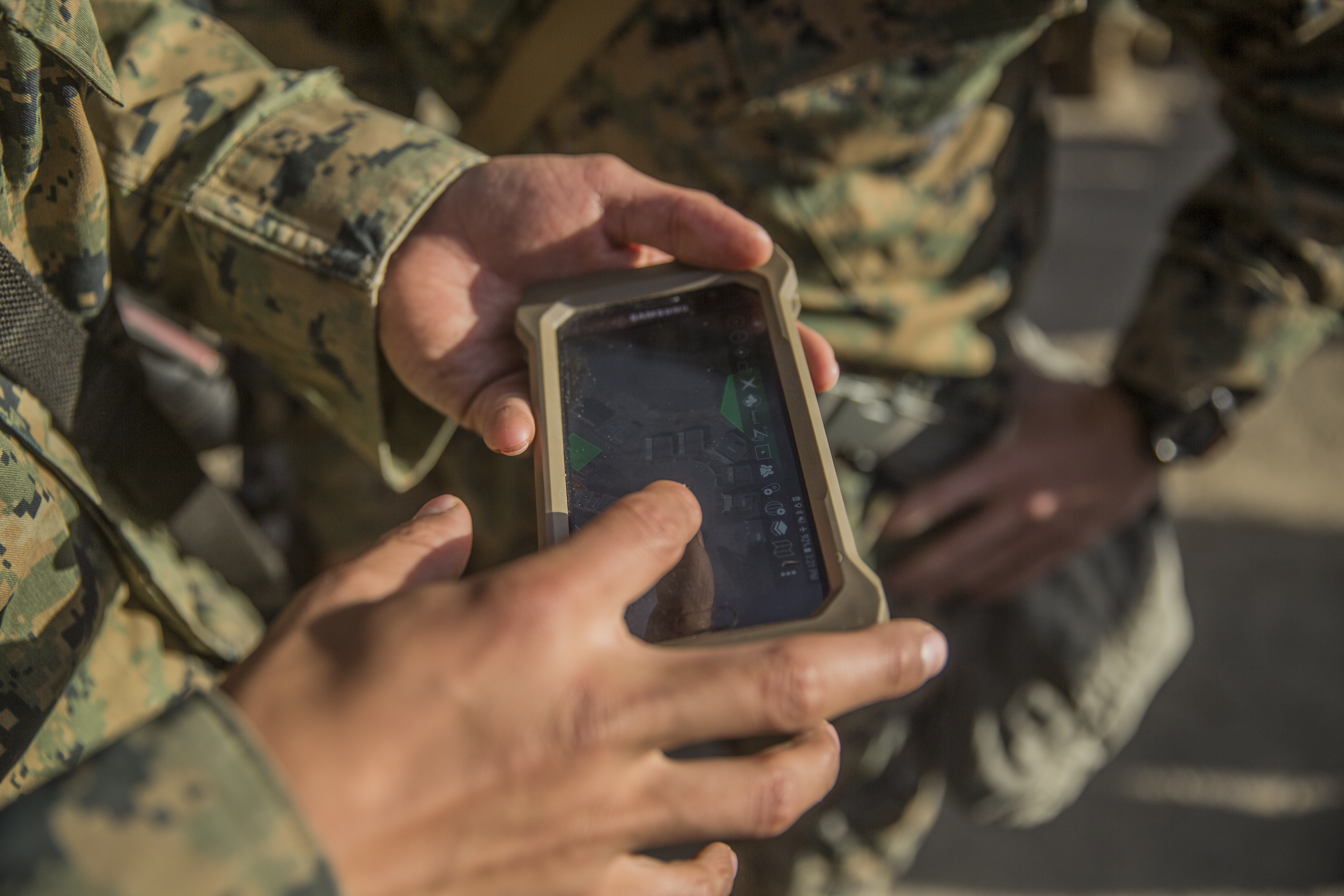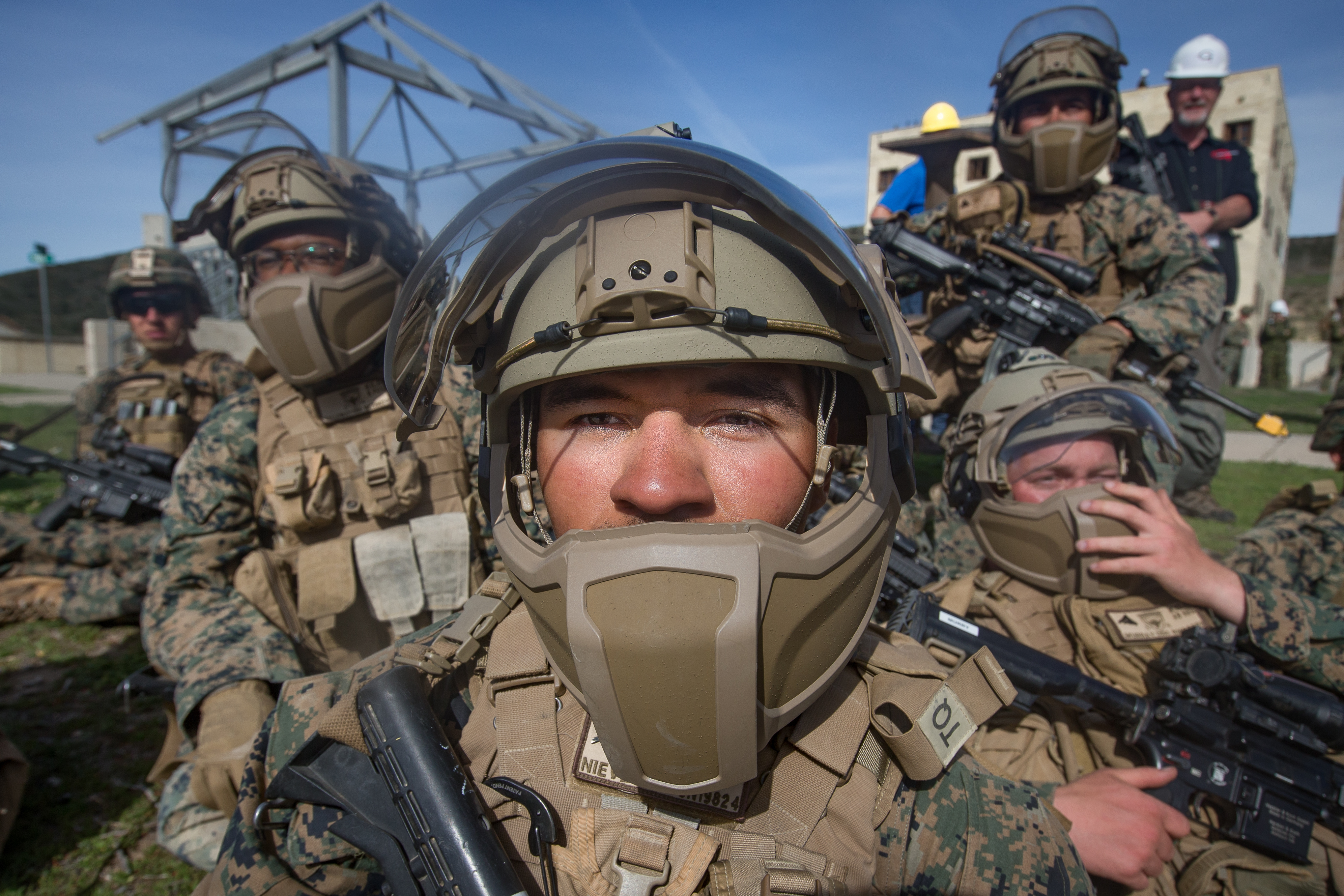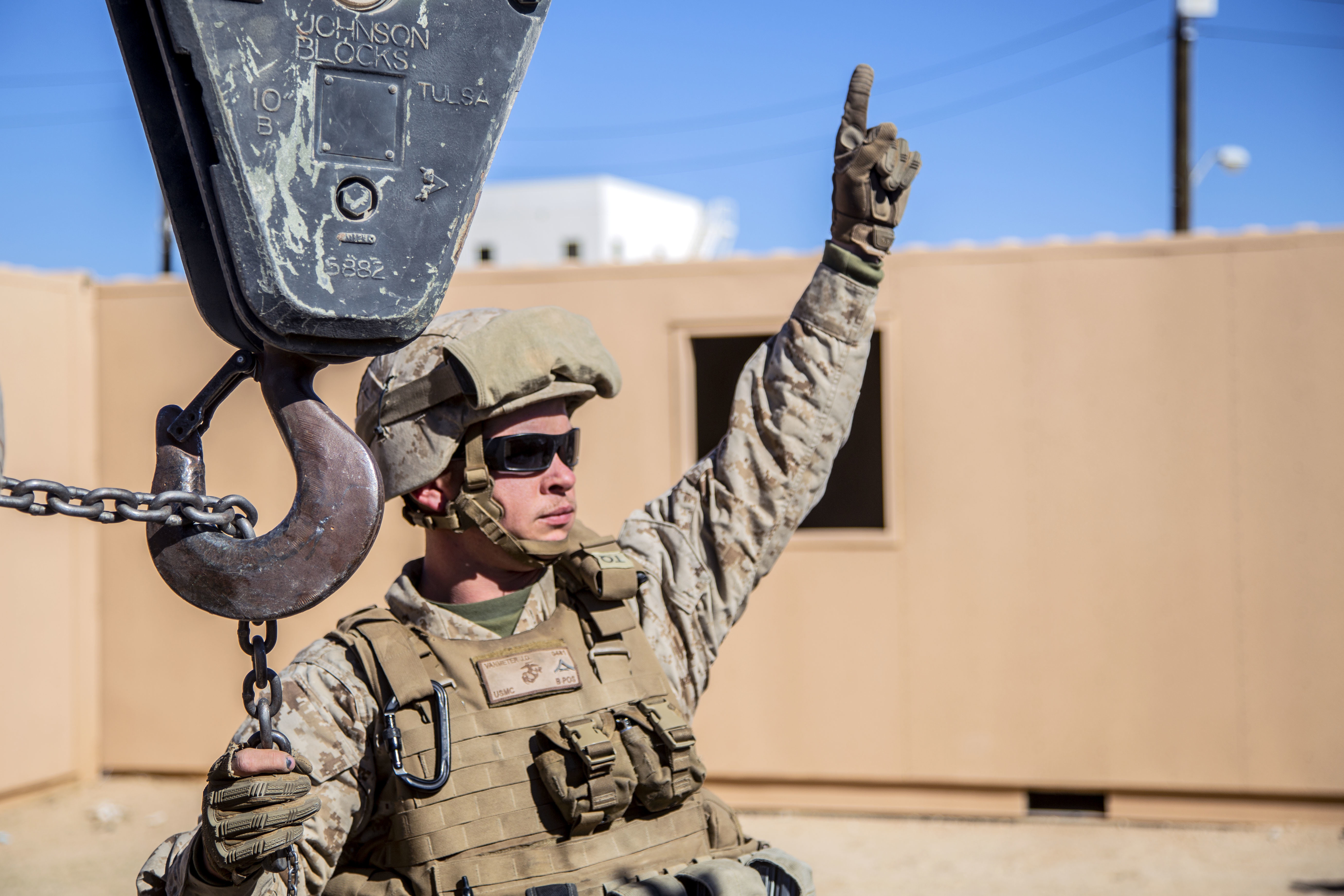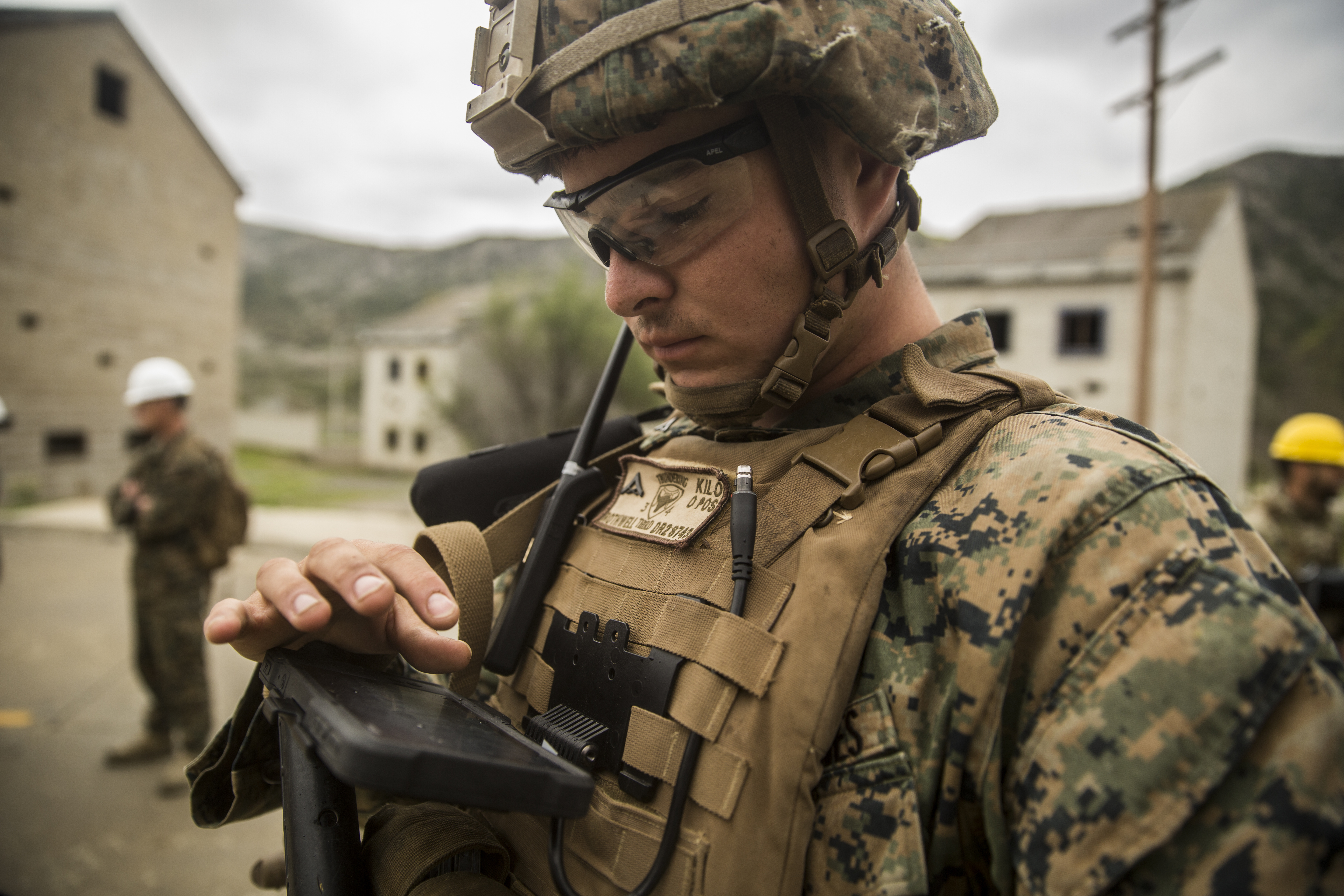
STAFFORD, Va. – The Marine Corps’ ongoing Sea Dragon experimentation campaign is working on one of the most pressing issues the naval force faces: how to incorporate the Marine Corps into the Navy’s battle for sea control.
The Marine Corps Warfighting Lab has bitten off pieces of the problem – boosting small unit lethality in 2017, conducting logistics in a contested environment in 2018, and information environment operations this fiscal year. MCWL Commanding General Brig. Gen. Christian Wortman said these efforts “will all culminate in an intensive focus in Fiscal Year 20, Sea Dragon 20, which will address fleet marine force contributions to a maritime component sea control campaign.”
“This effort is in direct support of the commandant’s commitment to integrate the naval force, one of the Marine Operating Concept’s critical tasks,” Wortman told reporters on Tuesday at a media briefing near Marine Corps Base Quantico.
“We know that fleets and fleet marine forces are far more lethal, survivable and effective when we fight as an integrated team, so we’re approaching Navy/Marine Corps capability development as an integrated team to the maximum extent possible.”
To support the FY 2020 iteration of Sea Dragon, the Navy and Marine Corps will collaborate on a Fight the Naval Force Forward Advanced Naval Technology Exercise (ANTX) series of events to test out new systems and new concepts of operations that will push the blue/green team closer to their ideal of operating from the sea and shore to control the maritime domain in a contested environment.
“The ANTX series is designed to provide to the commandant and the chief of naval operations capability options that meet pressing operational demands with emergent but relatively high-maturity technology,” Wortman said.
Asked what technologies MCWL had already begun to identify in its earlier Sea Dragon experiments that may be applicable to this naval battle scenario next year, Wortman told USNI News, “we really see a handful of capabilities that we can provide to the broader naval force that we think that will be particularly valuable for all elements of the maritime component. So the ability to sense the environment from a really distributed posture and to maintain high levels of domain awareness across all domains; the ability to fire on or to target based off of our awareness of the operating environment, based off of that domain awareness; the ability to support command and control across a really distributed laydown of Navy and Marine Corps forces; and then the ability to challenge an adversary’s work or efforts to target and track us. And maybe finally the ability to conduct logistics in forward locations in a manner that supports or sustains high-tempo naval operations. So we’re working in each one of these areas to be able to deliver that.”

A subset of these capabilities that are of particular interest to the Navy and Marines is long-range precision fires, and more specifically a long-range ground-based anti-ship missile.
“The commandant is determined to provide a Marine Corps capability to strike a killing blow against advanced surface ships from our [tactical aircraft] assets or land-based locations,” Wortman said.
“We owe to the commandant a range of options that the service can pursue to provide this capability to the operating force. Gen. [Robert] Neller has emphasized over time that the Marine Corps has to make a greater contribution to the sea control campaign; the ability to take ships out of the water is critical to that capability, so he’s pressurized the system in order to deliver the range of options that he should consider in order to provide this capability to the maritime component and to the joint force. The bottom line is, his expectation is we’ll have an advanced system that operates effectively in the most challenging environments, and we’re doing the technology development and the experimentation associated with employing that technology to develop those recommendations for the commandant.”
In addition to the technology itself, the Sea Dragon effort also includes concepts of operations development to support an integrated naval campaign. The Marine Corps has already drafted its Expeditionary Advance Base Operations (EABO) concept, “which is intended as a landward complement of Distributed Maritime Operations,” Wortman said, and the Sea Dragon effort will help translate that from a concept on paper to a way operating forces practice conducting their missions on a day-to-day basis.
“The concepts included in EABO are intended to support options for turning the sea denial table on potential adversaries and creating contested maritime spaces that support larger naval and joint force deterrence efforts,” Wortman said.
“These concepts are also intended to support options for distributing naval lethality across landward locations with mobile, relatively low-cost capabilities in austere and temporary locations. Expeditionary Advance Base Operations are an asymmetric approach to competition and deterrence and represent a force development focus on naval warfare.”
In addition to EABO, the Marine Corps also hopes to use Sea Dragon to develop concepts for competition below the level of conflict and for offensive amphibious operations.
FY 2017 Small-Unit Lethality

The Sea Dragon experimentation series was reinvigorated in 2017 with a focus on the infantry battalion. The commandant invested in wargaming and live-force experimentation meant to add greater lethality and firepower, improved command and control, expanded ability to conduct multi-domain surveillance and reconnaissance at all echelons, and enhanced small-unit sustainment capability, Wortman said. While some decisions were made after the first year of experimenting, such as investing in a “quads for squads” small unmanned aerial system and adding an assistant squad leader and a tech manager to each squad in the infantry, experimentation in this area is still ongoing. This calendar year, the Marine Corps hosted an Urban 5th Generation ANTX in March; a fires assessment in May that integrated loitering munitions, intelligence, surveillance and reconnaissance (ISR) assets, electronic warfare (EW) capability and command and control tools; a DARPA-led event called SquadX in August that looked at small-unit lethality; and a manned-unmanned teaming experiment in October and November that included work in the air, ground and EW domains, Wortman told reporters.
All the work that has been done so far on small-unit lethality will feed into a large-scale urban warfare experiment in the summer of 2019, which will for the first time at a large scale bring cyber and EW capabilities to the small-unit level.
FY 2018 Logistics

Even as the small-unit lethality work has continued, last fiscal year also saw the start of a new line of Sea Dragon experimentation focused on “logistics and sustainment in the most challenging, most highly contested environments,” Wortman said.
“No longer should we expect that logistics will be a freebie for us; we’re going to have to fight to sustain our forces over time in these environments,” he said, noting that the Marine Corps was particularly interested in technologies such as unmanned and autonomous logistics distributions systems in all domains – including underwater – logistics command and control tools and logistics information technology tools, and additive and advanced manufacturing capabilities that could be brought to an expeditionary environment to compress the supply chain and boost readiness in austere locations.
“The end goal is to sustain across all domains high-tempo operations while dramatically reducing risk to our Marines and frustrating the ability of potential adversaries to interrupt our sustainment operations,” Wortman said.
After two live-force experiments and three wargames on the subject of logistics, Wortman said MCWL is compiling its recommendations and will submit them to Neller this winter, likely just after the new year.
FY 2018 Information Environment Operations

This fiscal year Sea Dragon will focus on offensive and defensive Marine Corps operations in an information environment.
Wortman said the experimentation will focus on maintaining battle networks in the most highly contested environments; providing a high degree of domain awareness by employing novel and expansive techniques for distributed sensing of the environment, and then placing that information from those distributed sensors into networks the Marines can fire and fight from; breaking the enemy’s ability to sense the environment and their ability to close their kill chain; and the ability for commanders at all levels to integrate with fires and logistics.
When combined with the previous two years’ investments, Wortman said, “these are representative of an expansive commitment by the commandant to provide to the secretary of defense, to our combatant commanders more lethal, resilient and adaptive operating forces. All this is aimed at empowering the Marines and sailors that rely on our capability development efforts.”





